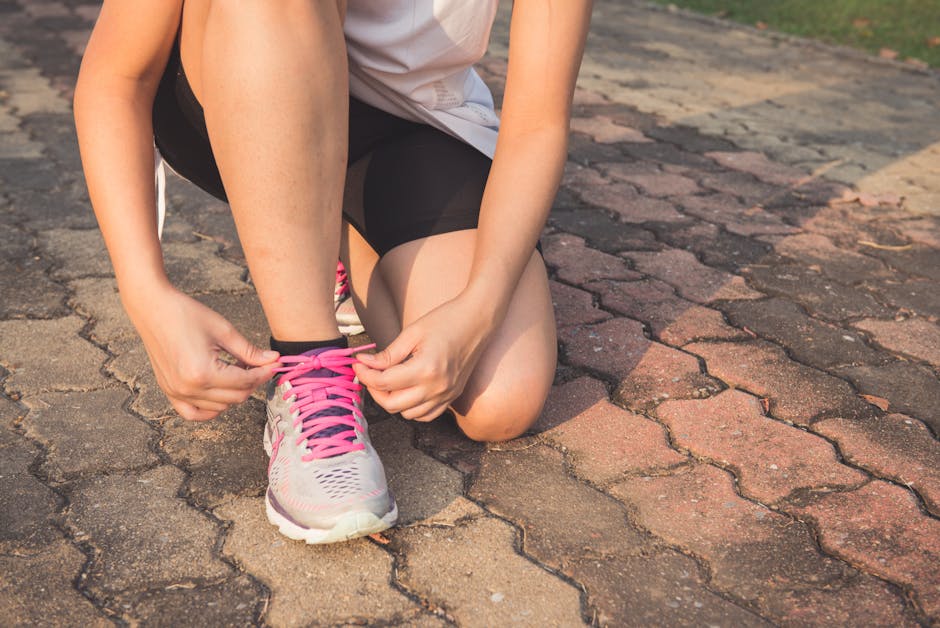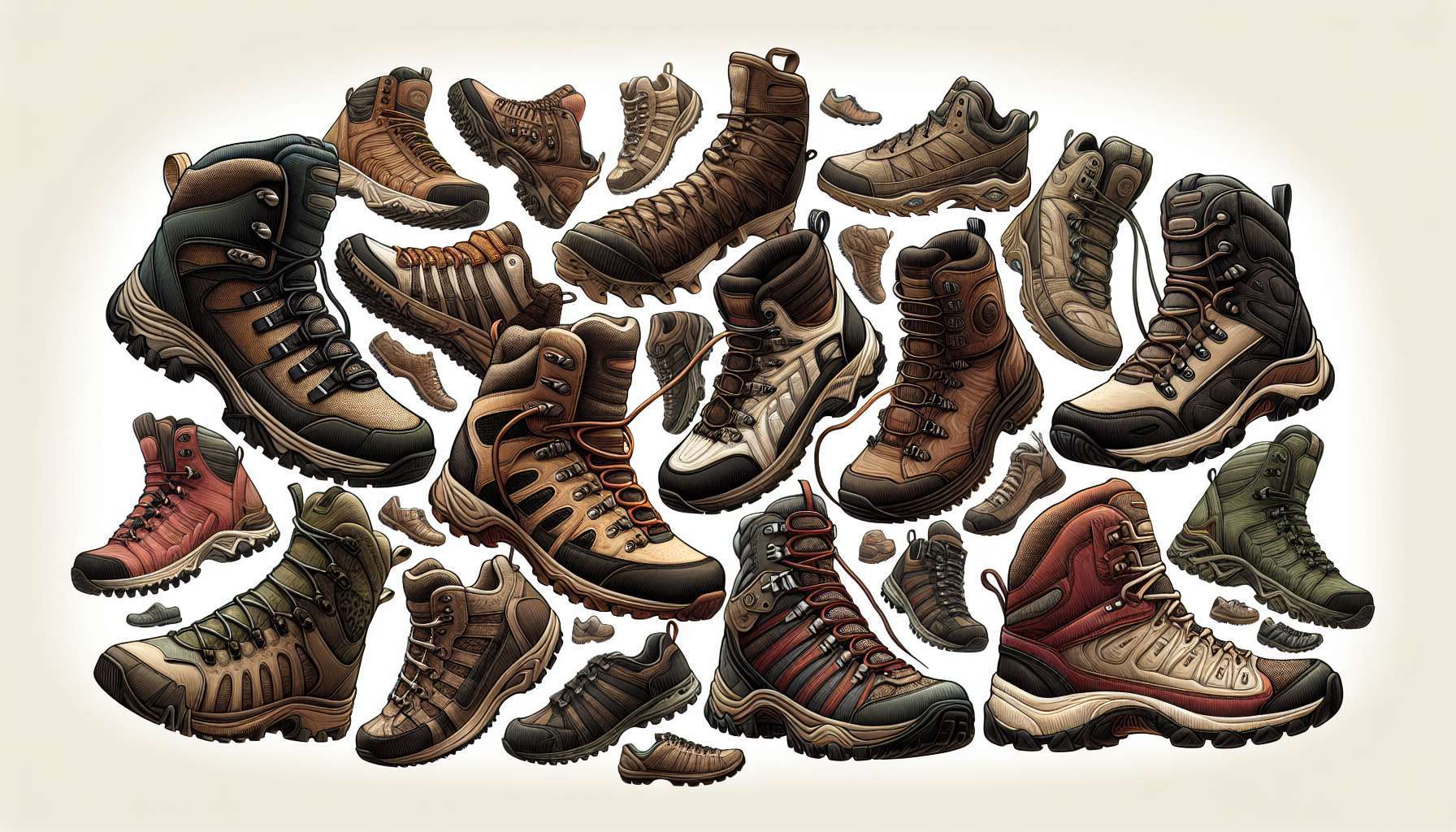Unveiling the Unmatched Wonder of Trail Running Shoes
Picture this: you’re amidst nature, surrounded by towering trees, chirping birds, and a trail that meanders through the wilderness. The crisp air fills your lungs as you set off on an adventure, your feet clad in the perfect pair of trail running shoes. These shoes are not just footwear; they are your trusted companions, navigating rugged terrains, slippery slopes, and rocky paths with unparalleled ease. Welcome to the world of trail running shoes where performance meets innovation, and nature meets technology.
In this comprehensive guide, we delve deep into the realm of trail running shoes, exploring their history, design, functionality, and everything in between. Join us on this exhilarating journey as we uncover the secrets behind these remarkable shoes and unlock the potential they hold for every trail runner out there.
The Evolution of Trail Running Shoes
Trail running shoes have come a long way since their inception, evolving from basic footwear to sophisticated gear tailored for the most challenging terrains. Initially, runners would simply adapt their regular running shoes for off-road trails, often facing discomfort and lack of traction. However, as the popularity of trail running surged, the need for specialized shoes became evident.
In the 1980s, companies like Salomon and New Balance introduced the first trail running shoes, featuring rugged outsoles, protective toe caps, and enhanced stability. These early models laid the foundation for the modern trail running shoe, paving the way for innovative designs and advanced technologies.
Today, trail running shoes are a fusion of style and substance, incorporating cutting-edge materials like Gore-Tex, Vibram, and EVA foam to deliver optimal performance in the great outdoors. From lightweight minimalist shoes to cushioned maximalist models, the market offers a plethora of options to cater to every runner’s needs.

The Anatomy of Trail Running Shoes
Understanding the anatomy of trail running shoes is crucial for selecting the right pair that suits your running style and terrain preferences. Let’s break down the key components that make up these specialized shoes:
Outsole
The outsole of a trail running shoe is perhaps the most critical component, as it determines traction, durability, and grip on various surfaces. Most trail shoes feature lugged outsoles with multidirectional patterns to provide superior traction on mud, rocks, gravel, and other challenging terrains. Vibram and Continental are renowned for their high-performance outsoles that offer exceptional grip and stability.
Midsole
The midsole of a trail running shoe plays a vital role in cushioning, support, and energy return. Materials like EVA foam, TPU, and polyurethane are commonly used in midsoles to provide a balance of comfort and responsiveness. Some shoes also incorporate technologies like Hoka One One’s Meta-Rocker design or Nike’s React foam for enhanced propulsion and shock absorption.
Upper
The upper of a trail running shoe refers to the top part that covers the foot and provides support and protection. It is typically made of breathable mesh, reinforced with overlays for added durability. Waterproof membranes like Gore-Tex or eVent are often used in the upper to keep the feet dry in wet conditions. Additionally, features such as toe caps, gusseted tongues, and heel counters enhance the overall fit and stability of the shoe.
Heel-to-Toe Drop
The heel-to-toe drop, also known as the offset or differential, is the difference in height between the heel and the forefoot of the shoe. Traditional running shoes have a higher drop (10-12mm), while minimalist shoes have a lower drop (0-4mm). Trail running shoes typically fall in the mid-range (4-8mm), providing a balance between heel cushioning and forefoot flexibility.
The Science Behind Trail Running Shoes
Trail running shoes are not just a product of design and aesthetics; they are deeply rooted in biomechanics and sports science. The quest for the perfect shoe involves a meticulous process of research, testing, and innovation to optimize performance and minimize injury risk.
Biomechanics
Biomechanics is the study of how the body moves during physical activities like running. When it comes to trail running shoes, biomechanics play a crucial role in determining factors like cushioning, stability, and pronation control. Understanding the biomechanics of each individual runner helps shoe designers create customized solutions that cater to specific needs and preferences.
Impact Protection
One of the primary functions of trail running shoes is to provide adequate impact protection to reduce the stress on the feet, ankles, and knees during running. Cushioning materials in the midsole absorb and dissipate the shock of each foot strike, preventing injuries and enhancing comfort. The ideal balance of cushioning and responsiveness is essential to ensure a smooth and efficient running experience.
Stability and Support
Trail running shoes are designed to offer stability and support on uneven terrains, preventing excessive foot movement and reducing the risk of sprains or twists. Features like a secure lacing system, reinforced heel counter, and firm midsole provide the necessary structure to maintain proper foot alignment and control over rough surfaces. Pronation control elements may also be incorporated to address overpronation or underpronation.
Choosing the Right Trail Running Shoes
With a plethora of options available in the market, selecting the right trail running shoes can be a daunting task. To make an informed decision, consider the following factors:
Terrain
Identify the type of terrain you will be running on most frequently whether it’s rocky trails, muddy paths, technical terrains, or smooth surfaces. Choose shoes with appropriate outsole lugs, grip patterns, and protective features that suit the specific demands of your running environment.
Fit
Ensure that the shoes fit snugly but comfortably, with ample room for toe splay and foot expansion during long runs. The heel should be secure, the midfoot stable, and the toe box roomy enough to prevent rubbing or constriction. Consider trying on shoes in the late afternoon when your feet are slightly swollen to get the most accurate fit.
Cushioning
Decide on the level of cushioning that best suits your running style and preferences. Minimalist shoes offer a more natural feel and ground contact, while maximalist shoes provide maximum shock absorption and comfort. Choose a shoe with the right amount of cushioning based on your running distance, pace, and foot strike pattern.
Drop
Determine the heel-to-toe drop that aligns with your running mechanics and comfort level. Runners with a history of injuries or lower limb issues may benefit from a lower drop to promote a more natural gait and reduce strain on the body. Experiment with different drop heights to find the optimal balance for your needs.
Expert Opinions on Trail Running Shoes
Renowned trail runners and experts in the field share their insights on the importance of choosing the right trail running shoes:
Scott Jurek, Ultra Runner
“Trail running shoes are more than just gear; they are an extension of your body on the trail. Finding the perfect fit and feel can make all the difference in your performance and enjoyment of running in the great outdoors.”
Dr. Emily Splichal, Podiatrist
“As a podiatrist, I emphasize the significance of proper footwear in preventing injuries and maintaining foot health. Trail running shoes with adequate support, cushioning, and stability can protect your feet and ankles from the rigors of off-road running.”
Common Misconceptions About Trail Running Shoes
Despite their popularity, trail running shoes are often subject to misconceptions and myths. Let’s debunk some common myths surrounding these specialized shoes:
Myth: Trail running shoes are only for elite athletes.
Reality: Trail running shoes are suitable for runners of all levels, from beginners to seasoned pros. They offer enhanced traction, protection, and stability, making them ideal for anyone venturing off-road.
Myth: The more cushioning, the better the shoe.
Reality: While cushioning is essential, excessive padding can hinder proprioception and natural foot mechanics. It’s crucial to find a balance between cushioning and ground feel to optimize performance and comfort.
Comparative Analysis of Trail Running Shoes Brands
Several brands excel in the production of trail running shoes, each offering unique features and technologies. Let’s compare some of the top brands in the market:
Salomon
Salomon trail running shoes are renowned for their lightweight design, precise fit, and aggressive outsoles. The Speedcross and Sense series are popular choices among trail runners for their exceptional traction and durability.
Brooks
Brooks trail running shoes are known for their comfort, cushioning, and stability. The Cascadia and Caldera models provide a plush ride and reliable grip on various terrains, making them favorites for long-distance runners.
Altra
Altra trail running shoes stand out for their zero-drop platform, wide toe box, and natural foot positioning. The Lone Peak and Superior series offer a minimalist approach with ample cushioning and protection for a more connected trail running experience.
FAQs About Trail Running Shoes
Q: Do trail running shoes require break-in periods?
A: While some shoes may feel more comfortable after a few runs, modern trail running shoes are designed to be comfortable out of the box. It’s essential to ensure a proper fit from the start to avoid discomfort or blisters.
Q: Can trail running shoes be used for other activities?
A: Trail running shoes are versatile and can be used for hiking, trekking, and other outdoor pursuits. Their rugged construction and grippy outsoles make them suitable for a wide range of activities beyond running.
To Wrap Things Up
Trail running shoes are not just footwear; they are a gateway to adventure, freedom, and connection with nature. By choosing the right pair that aligns with your running goals and preferences, you can unlock the true potential of trail running and embark on unforgettable journeys through the great outdoors. So lace up, hit the trails, and let your trail running shoes carry you to new heights of exploration and discovery!




